Introduction

In the vast realm of culinary arts, traditional dishes often hold a special place, not just for their taste but also for the stories and traditions they encapsulate. One such dish, hailing from the heart of Chinese cuisine, is the steamed pork hock, or “zheng ti bang” in Mandarin. This dish is a testament to the art of slow cooking, where time and patience transform a relatively tough cut of meat into a tender, flavorful masterpiece. In this guide, we embark on a culinary journey to uncover the secrets of making a perfect steamed pork hock, from selecting the right ingredients to mastering the steaming technique.
Section 1: Understanding the Ingredients
Before diving into the preparation, it’s crucial to understand the key ingredients and their roles in creating a delicious steamed pork hock.
1 The Star: The Pork Hock
The pork hock, also known as the pork knuckle or shank, is a cut from the pig’s hind leg. It’s characterized by its rich collagen content, which makes it ideal for slow cooking methods like steaming. The collagen breaks down during the cooking process, resulting in a melt-in-your-mouth texture. When choosing a pork hock, look for one with a good amount of marbling and a firm, yet slightly yielding texture. Freshness is paramount; a good pork hock should have a clean, slightly sweet aroma with no off-putting smells.
2 Seasonings and Aromatics
The beauty of steamed pork hock lies in its simplicity, allowing the natural flavors of the meat to shine. However, a few key seasonings and aromatics can elevate the dish to new heights. Essential ingredients include:
- Ginger: Fresh ginger slices help to neutralize any gamey flavors and add a subtle sweetness.
- Scallions: These are used both for garnishing and for their mild onion flavor.
- Garlic: Minced garlic adds depth and complexity to the dish.
- Shaoxing Wine: A Chinese rice wine that adds a layer of umami and enhances the overall flavor profile.
- Soy Sauce: Dark and light soy sauces provide color and seasoning.
- Rock Sugar: This adds a hint of sweetness that balances the savory notes.
- Five-Spice Powder: A blend of cinnamon, cloves, fennel, star anise, and Sichuan peppercorns that adds an aromatic complexity.
3 Binding Agents and Marinades
To ensure the seasonings penetrate deep into the meat, a marinade is often used. This can include a combination of soy sauce, Shaoxing wine, garlic, ginger, and five-spice powder. Additionally, a binding agent like cornstarch or tapioca starch can be used to create a glossy finish on the pork hock and help retain moisture during steaming.
Section 2: Preparation Techniques
With the ingredients in place, it’s time to focus on the preparation techniques that will ensure a successful outcome.
1 Blanching the Pork Hock
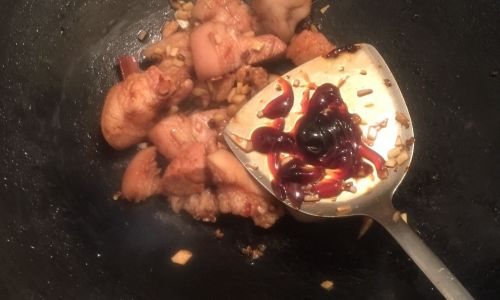
Blanching is a crucial step that helps to remove impurities, tighten the meat fibers, and prepare the surface for better absorption of marinades. To blanch the pork hock:
- Fill a large pot with water and bring it to a rolling boil.
- Add a few slices of ginger and a splash of Shaoxing wine to the water.
- Carefully lower the pork hock into the boiling water, ensuring it’s fully submerged.
- Blanch for about 10-15 minutes, skimming off any foam that rises to the surface.
- Remove the pork hock with a slotted spoon and rinse it under cold running water to stop the cooking process.
2 Marinating the Pork Hock
Once blanched, the pork hock is ready for marinating. In a large bowl or non-reactive container, combine the marinade ingredients (soy sauce, Shaoxing wine, garlic, ginger, five-spice powder, and rock sugar). Place the blanched pork hock in the marinade, ensuring it’s well-coated. Cover the container and refrigerate for at least 4 hours, preferably overnight, to allow the flavors to fully penetrate the meat.
3 Preparing the Steaming Environment
Steaming is a gentle cooking method that requires precise control of temperature and humidity. A traditional bamboo steamer is ideal, but a modern metal steamer or even a large pot with a steaming rack can be used.
- Fill the steamer or pot with enough water to reach just below the steaming rack.
- Bring the water to a simmer, not a rolling boil, to avoid excessive condensation that can waterlog the pork hock.
- Line the steaming rack with parchment paper or banana leaves to prevent sticking and to add an extra layer of flavor.
Section 3: The Steaming Process
Now, the moment of truth arrives – it’s time to steam the pork hock.
1 Arranging the Pork Hock
Remove the pork hock from the marinade, allowing any excess to drip off. Place it on the prepared steaming rack, fat side up, to ensure even cooking and a glossy finish. If the pork hock is particularly large, it may need to be tied with kitchen twine to maintain its shape during steaming.
2 The Art of Steaming
Cover the steamer and adjust the heat to maintain a gentle simmer. The steaming process will take several hours, depending on the size of the pork hock. A rough guideline is 3-4 hours for a medium-sized hock, but it’s essential to check for doneness by inserting a chopstick or fork into the thickest part of the meat. It should slide in easily with minimal resistance.
During the steaming process, resist the urge to open the steamer lid frequently, as this can cause temperature fluctuations and affect the cooking time. However, if the water level in the steamer drops significantly, carefully add more boiling water to avoid drying out the steamer.
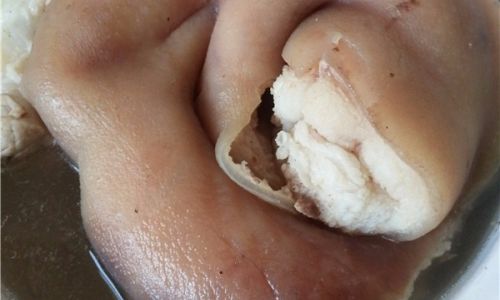
Section 4: Finishing Touches
Once the pork hock is cooked to perfection, it’s time to add the finishing touches that will elevate it from good to great.
1 Resting the Meat
Once steamed, remove the pork hock from the steamer and let it rest for at least 30 minutes. This allows the juices to redistribute, ensuring a moist and tender texture when sliced.
2 Garnishing and Serving
While the pork hock is resting, prepare the garnishes. Finely slice some scallions and set them aside. Once the pork hock has rested, carefully transfer it to a serving platter. Slice it into thick pieces, revealing the juicy, tender meat and the gelatinous layer that has formed. Garnish with the sliced scallions and, optionally, a drizzle of extra soy sauce or a sprinkle of sesame seeds for added flavor and texture.
3 Accompaniments
Steamed pork hock is traditionally served with a variety of accompaniments that enhance its flavors. Consider serving it with:
- Steamed Rice: The ultimate comfort food combination, where the rich, savory flavors of the pork hock complement the simple, starchy goodness of rice.
- Pickled Vegetables: These add a refreshing crunch and tanginess that balances the richness of the pork.
- Chili Sauce: For those who enjoy a bit of heat, a dollop of chili sauce can elevate the dish to new levels of flavor.
- Cucumber Slices: These provide a cool, crisp contrast to the rich texture of the pork.
Conclusion
Making a perfect steamed pork hock is a labor of love that requires patience, precision, and a deep understanding of culinary techniques. From selecting the right ingredients to mastering the steaming process, each step is crucial in creating a dish that is not just a meal but an experience. As you embark on this culinary journey, remember that the best recipes are often those that have been passed down through generations, refined and perfected over time. With this guide as your companion, you’ll be well-equipped to create a steamed pork hock that will delight your taste buds and evoke a sense of tradition and nostalgia. Enjoy your culinary adventure!

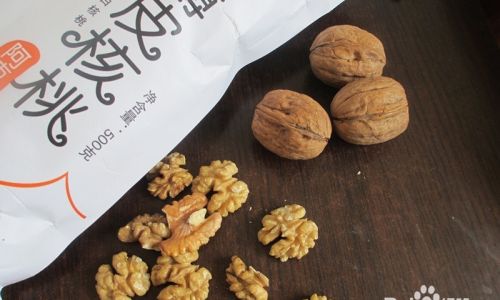


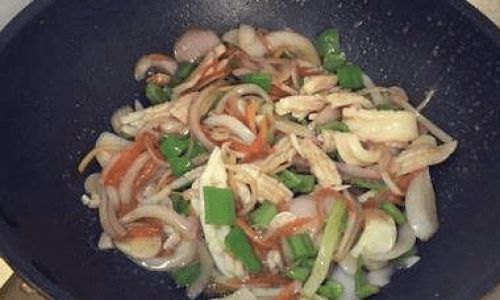
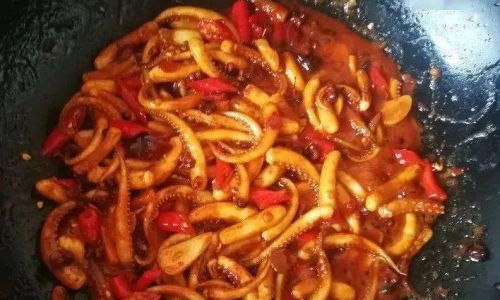
0 comments